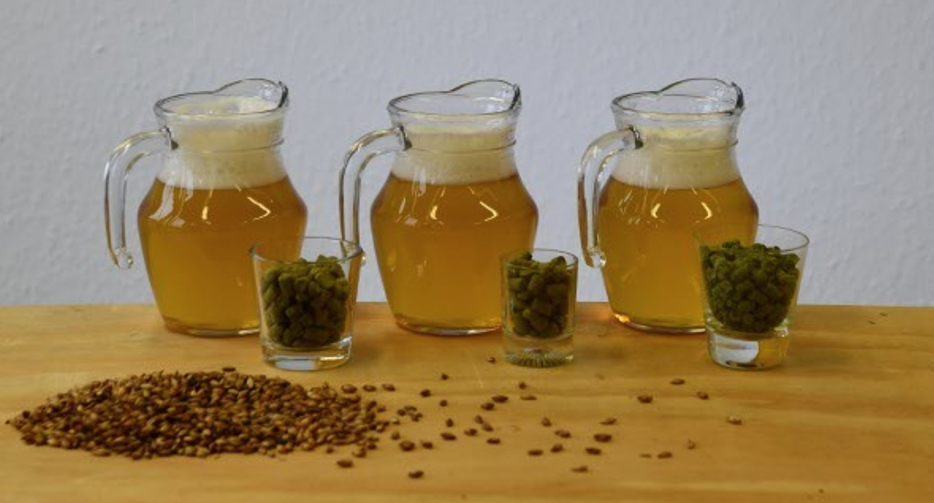
Background
There has been an explosion in the number of hops that are now available to the home brewer. With so many types on offer we decided to compare and contrast a few as late additions.
Aim
To taste the different flavours different hops bring to a beer.
Method
A simple malt bill of 50% Pilsner and 50% Munich dark was used, with Magnum as the bittering hop. A Kviek yeast was added and then the wort was split into 6 bottles with hop additions, equivalent to 30g per 20 litre as a quasi aroma addition.
- Simcoe
- Calypso
- Mandarina Bavaria
- Citra
- Flyer
- Control
Results
Taste test
Our lucky tasting panel were given all 6 beers to try side and side, and were given the flavour profiles of the hops and told that one of them had no late hop addition (control).
The Simcoe seemed to be the most popular, with comments such as citrusy and no lingering bitterness. Calypso on the other hand was described as having a lingering bitterness but 2 out of 6 people said they preferred this to the Simcoe. The Manderina Bavaria was thought to be the control by many people, with no one detecting the flavours of tangerine or citrus, perhaps this was just a bad batch? The results of the Citra were surprising, this is usually a go to hop of mine but in this case the nice citrusy favour was not there but there was this grassy flavour. The Flyer hop gave the beer a harsh bitterness and was not generally well received. The comments on the control were exactly that, it does not have a hop flavour or any of the other harsh bitterness, lingering bitterness or citrusy flavours of the others.
The science stuff

The parameters of the beers can be seen in the table above.
The Free amino nitrogen (FAN) content of the wort and beer is used for quality control reasons. A wort with insufficient levels of FAN for the gravity may not reach the desired level of fermentation for example, and residual FAN in beer can lead to post fermentation reactions that cause beer staling. Dry hop or late hop additions can significantly increase the FAN content of the beer. It is interesting to note the differing FAN levels of the beers, with the control beer sitting somewhere in middle.
Summary and after thoughts
There was surprising variation between the 6 samples in terms of the beer parameters. Although some fluctuations between them is expected, as they are fermented independently from each other, the amount observed is higher than that. This was likely caused by slightly different volumes of liquid yeast and the liquid the hop addition was added in. In future experiments this step should be under more rigorous control. The lack of citrusy flavour in the Citra hopped beer was also unexpected and gaining a greater understanding of why this occurs and the conditions that give rise to the grassy flavour are also of interest. A quick shout out to Basic Brewing Radio here, their Hop Sampler episodes are the inspiration behind our hop sampler experiments.
Thank you for reading another of what we hope to be many blogs investigating the brewing process of beer, the fermentation of wines, country wines, ciders, meads and all the interesting drinks that fall somewhere in between. If you have any comments or you would like to suggest something to investigate get in touch with us at: brewingdeconstructed at qfood.info



